I’m here to talk about public golf in Chattanooga. I’m not here to talk about Sweetens Cove.
About five miles east of downtown lies Brainerd Golf Course. Opened in 1926 and owned by the city, it was designed by Donald Ross, with his drawings for the course simply listing the course name as, “Chattanooga”. The Tufts archive indicates that it may have formerly been known in the past as Chattanooga Muni.
The course has been renovated twice, once in 1953 by Alex McKay and again in 1983 by G. R. Baiard. By all accounts, neither renovation seems to have done much justice to Ross’ original design.
That was a short introduction, but by all means it is worth reading more deeply into the history, and current state of, Brainerd Golf Course. I know no better source than Will Bardwell, because if it wasn’t for his article on Brainerd, I never would have known it existed. I highly encourage you to pause now and take a look. If not for your own sake, then for mine, because it will help you understand what I am about to show you.
Brainerd stands positioned to establish a personality that… few golf courses in America could challenge. There is no reason that Brainerd shouldn’t be the finest municipally owned golf course in the South. Whether it ever achieves that station depends entirely on whether its caretakers realize what they have on their hands and muster an urgency worthy of the place.
There are a few success stories that come to mind when thinking about modern municipal golf course renovations. I’m probably not knowledgeable enough on the subject to produce a lengthy list, but the one that comes to mind for me is Charleston Muni. In Charleston’s case, the course itself didn’t have a rich history to return to, but the area did, in the form of numerous Seth Raynor designs, and that history is now reflected in the course’s redesign. As Andy Johnson states in the above article:
Above all, Charleston Municipal makes an emphatic case that municipal golf courses don’t have to be bland. They can take architectural risks, and they should, like the downtown buildings and botanic gardens that tourists love, offer a flavor of local history.
Chattanooga has a chance in Brainerd, as Bardwell writes, not only to return to a rich history, but also to bolster an already strong golf scene in Chattanooga:
Brainerd could be so much more: a rare, publicly owned Ross course in the heart of a major city. Around Chattanooga’s edges, public golf is already enjoying a boon; by restoring Brainerd, Chattanooga could cement itself as the hub of the area’s golf travel, and elevate a scruffy local hangout into a must-see destination.
I know that as someone who does digital restorations of golf courses, I occupy a very small, very specific space on the Internet. But I also know that it only takes one person with the right connections to see an idea and to set things in motion (*waves hi to the upcoming Lido opening at Sand Valley*). With that in mind, I set to work almost two years ago on digitally restoring the original vision of Donald Ross for Chattanooga Muni.
Do I think this project will result in the ultimate restoration of Donald Ross’ plans at Brainerd? I don’t know. In all likelihood, probably not. But if there is someone out there that has the ability to kickstart a restoration campaign, but they just aren’t sure what such an endeavor would look like, then perhaps this could be the spark of inspiration that is needed… who knows!
As I introduce the changes made at Brainerd, allow me start with a disclaimer: I am not a golf course designer, nor have I ever been a part of the golf course construction process, so I’m not sure which parts of this digital restoration are feasible and which parts aren’t. I simply tried to make decisions that seemed rational and possibly cost effective so that they represent at least a marginally realistic chance at coming to fruition on a municipal budget. For example, at some point, possibly in the 1983 renovation, a retention pond was added to the original 2nd hole (today’s 11th hole) that was not included in the original Ross plans. If I wanted to be truly authentic to the plans, I would take that pond out. I don’t know what it costs to remove a pond, but I know it can’t be cheap, especially at a course which seems to already have some occasional drainage problems. So I kept the pond and incorporated it into a hybrid design for the new version of the original 2nd hole.
For the process, I started by collecting the elevation data for today’s Brainerd course and importing it into the PGA 2K1 game. This allowed me to start with what the course looks like today, and from there I transcribed all of Donald Ross’ notes on the original designs to see how similar or different they were from today’s course. I won’t lie, interpreting the handwriting was difficult.
There were some factors in my favor, though. First, Ross’ hole diagrams are all done on grids, with each box representing a 5 yard by 5 yard area, so judging the size of the greens, fairways, and tees was never an issue. Second, all of the original green sites are still in place and mostly untouched, besides the usual shrinking and transforming of the greens into small oval shapes. This gave me a starting place for each hole that allowed me to work backward towards the tee, drawing the Ross plans directly on top of the existing course.
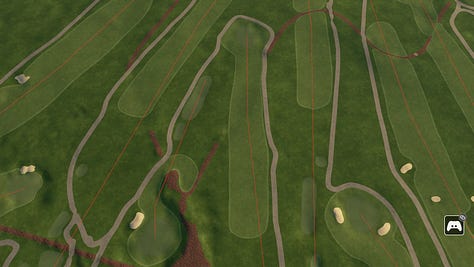
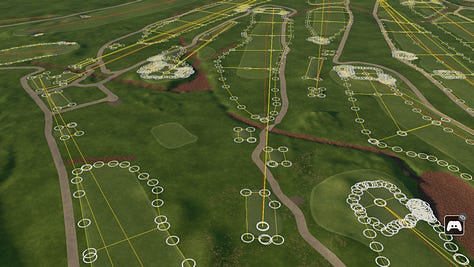
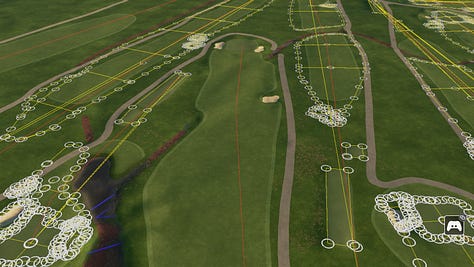

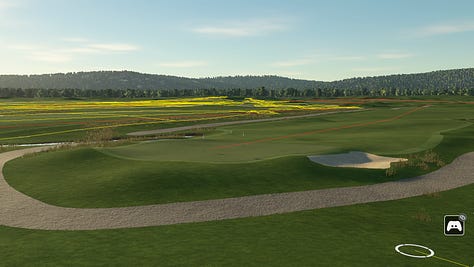
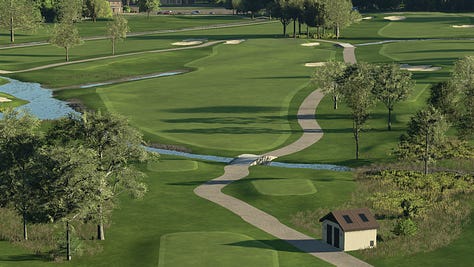
With the Ross plans in place on top of the existing course, it allowed me to assess what was feasible, what could be restored exactly, and what changes would need to be accommodated. On most holes, narrow tree-lined fairways were replaced with wide fairways intended to be anywhere from 40-60 yards wide, and defended by drainage ditches as opposed to trees. Bunkers were restored mostly to their original locations, with an occasional fairway bunker relocation, where space permitted, made to accommodate modern driver distances. This was rare, though, as the small number of fairway bunkers in the original plans were smartly placed.
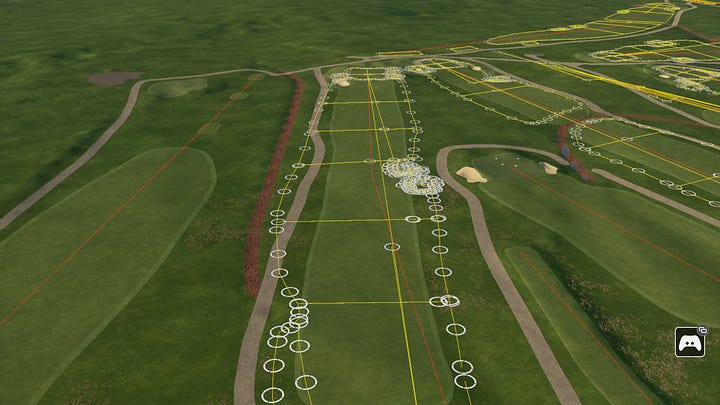
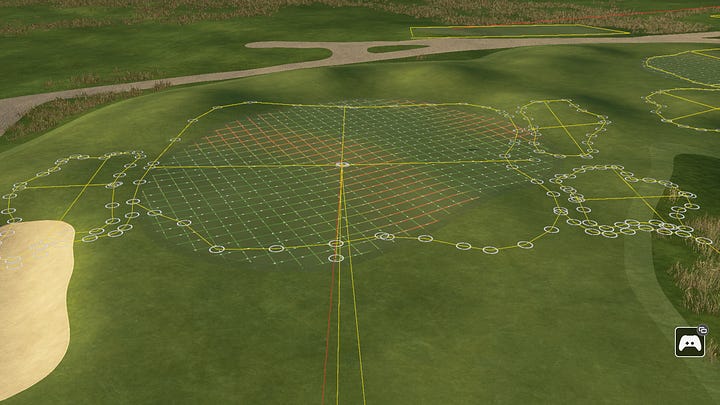
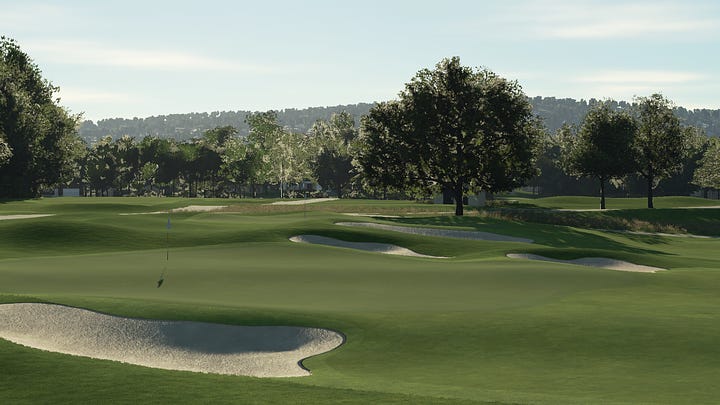
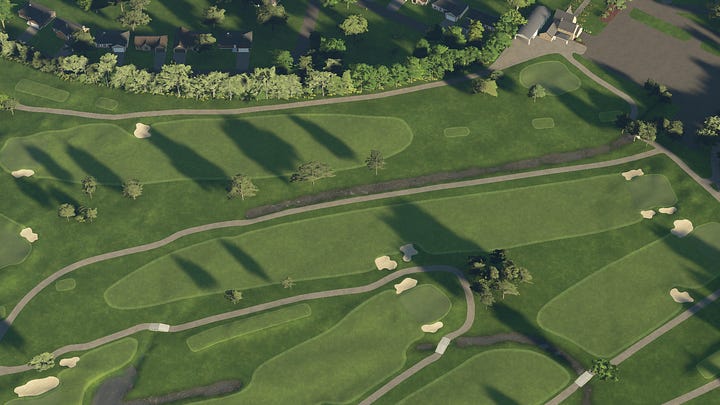
Before I conclude, let me run through a quickfire list of challenges that came with this project. I mentioned the retention pond on the 2nd hole, and there were several more that come into play throughout the course. I kept all of these and worked around them. Other costly things that I did not want to disrupt too much were cartpaths and trees. The widened fairways often pushed out into territory previously occupied by either of the aforementioned, so each hole essentially included an audit of what was important to the hole and what could be retained (but let’s be honest, I wasn’t too forgiving with the trees). Lastly, for the purposes of creating a realistic representation of what the new course would look like, I had to try and capture the environment of a course that I haven’t been to before, is in a state that I haven’t frequented often, and quite frankly doesn’t have a lot of pictures available online. The course is closely surrounded by neighborhoods, thankfully, so Google Streetview became one of my main sources.
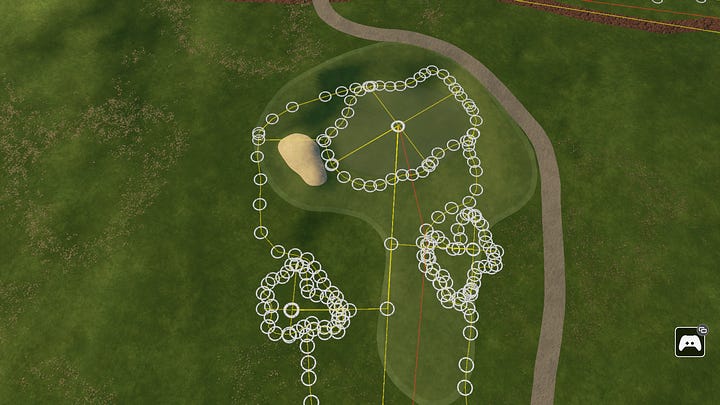

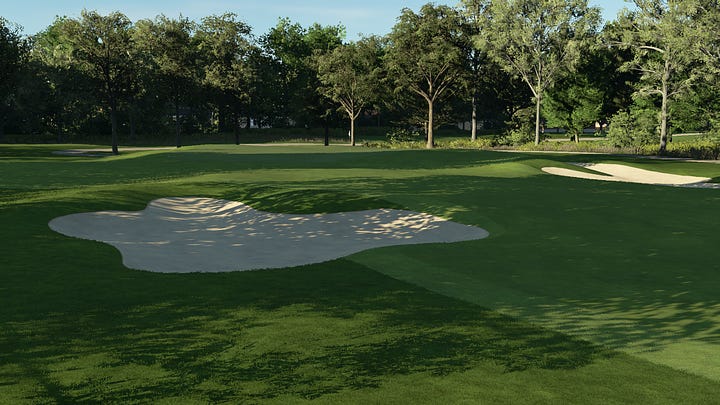
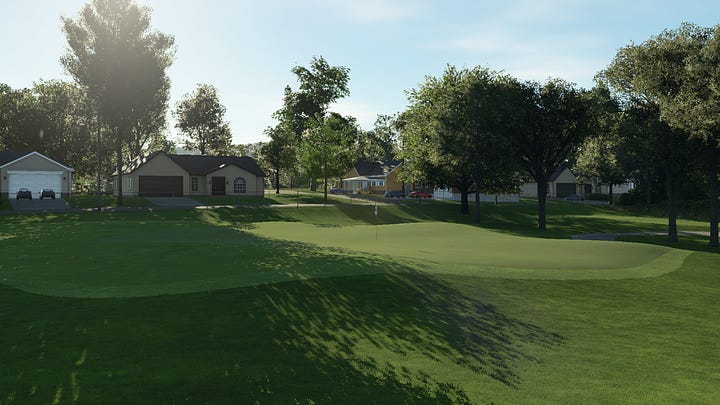
The final result, when played virtually, is a course that feels wide open for the high handicapper, with only a handful of forced carries and an easy route in at the front of each green. The greens are now the main challenge and the great equalizer. As with any Ross, anywhere above the hole is generally the wrong place to be, and where you are putting from in relation to the hole can make all of the difference in your score. Most importantly, it gives everyone a fair shot at the course, without being boring or uninteresting for the good player.
If you own the PGA 2K23 game on any platform, you can now play the restored version of the course under the name “Chattanooga Muni”. If you don’t own the game, keep an eye on my socials (@greatlakesloops), as I will try in the coming days to produce a video playthrough of the course to show the updates hole-by-hole.
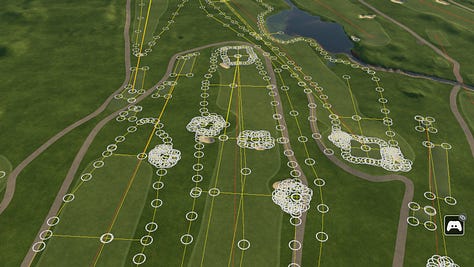
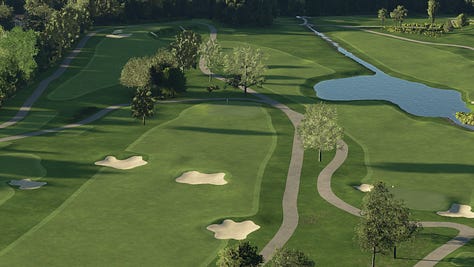
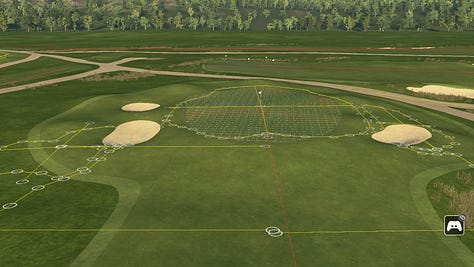
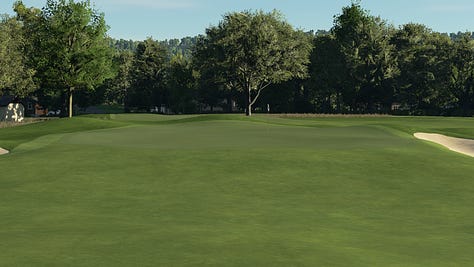
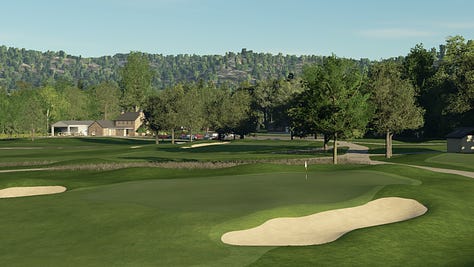
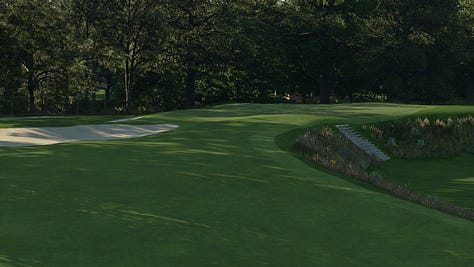




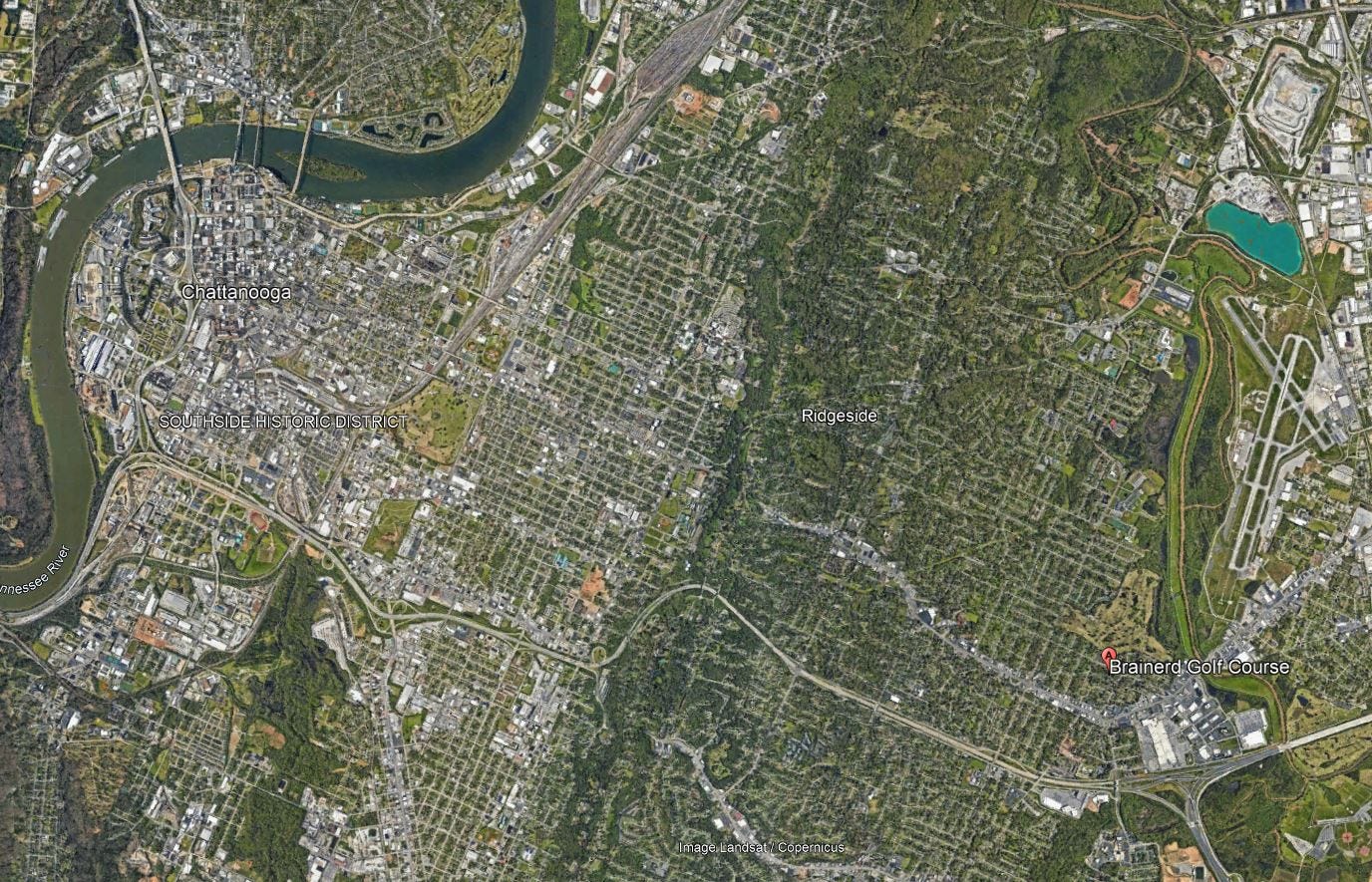
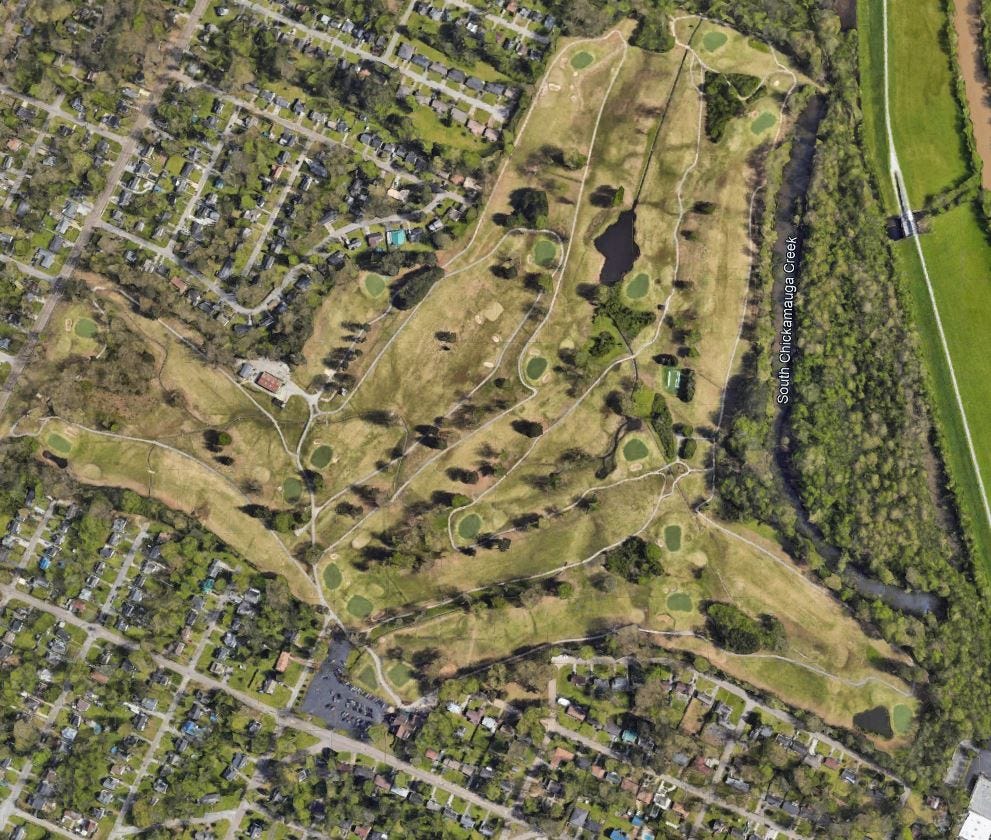
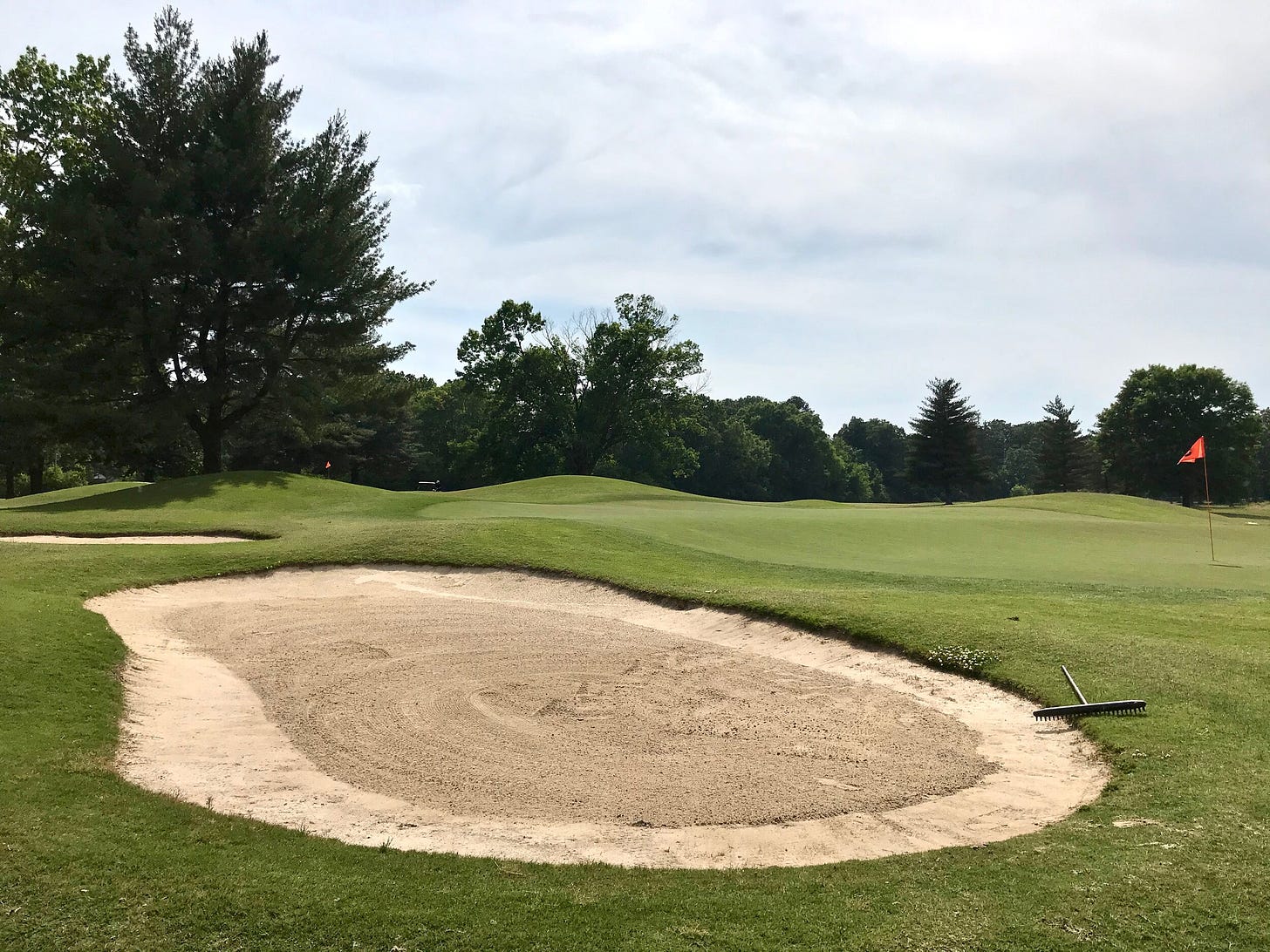
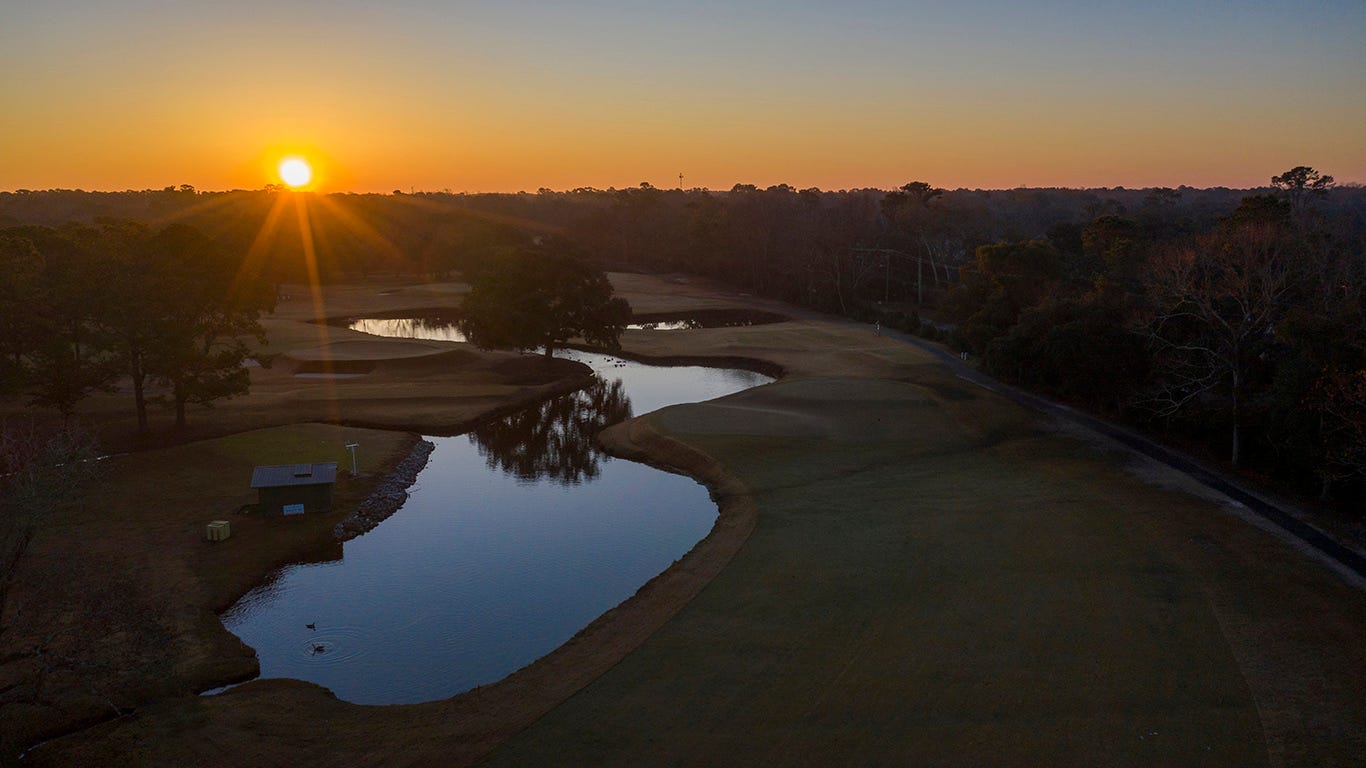
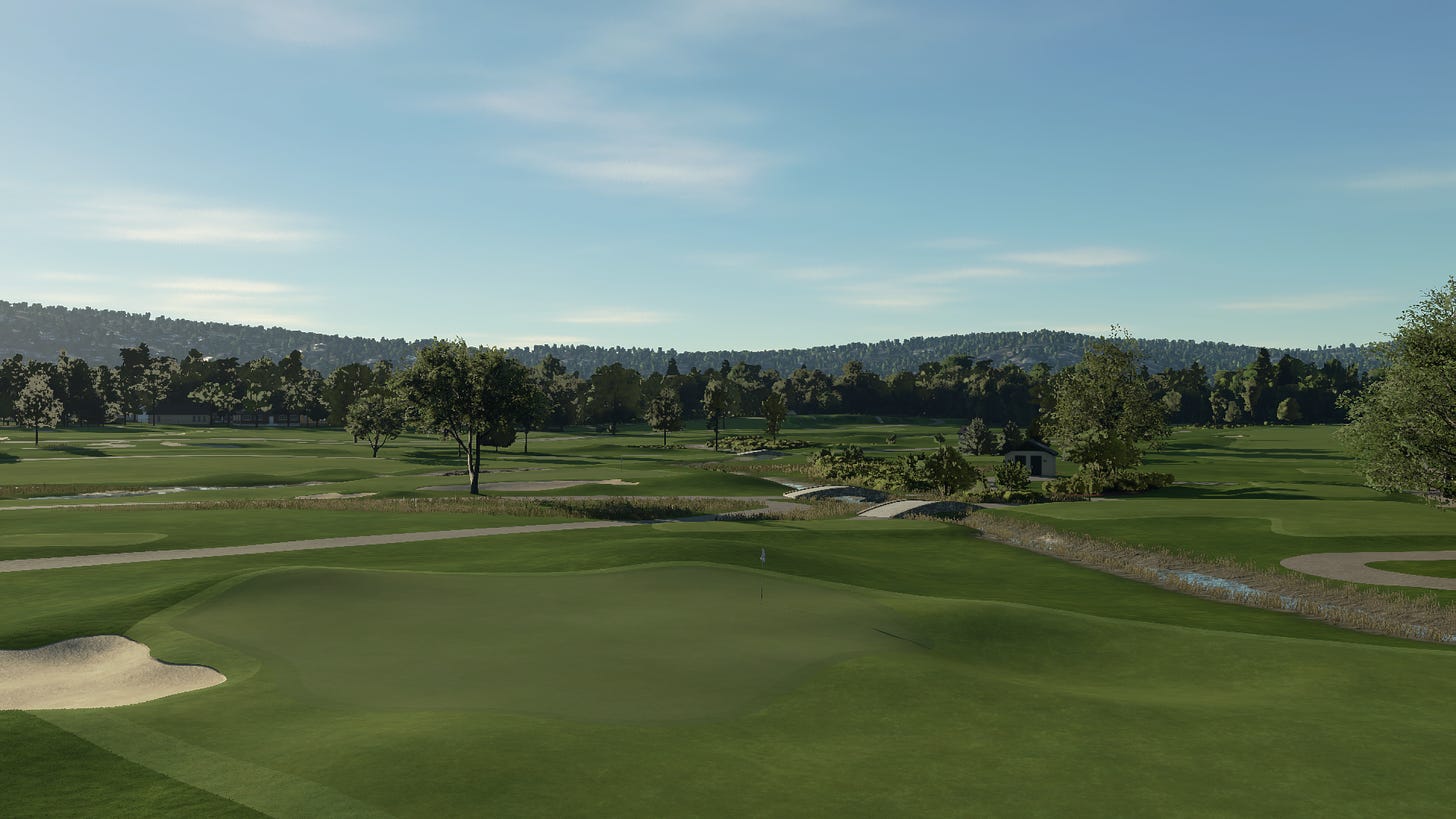

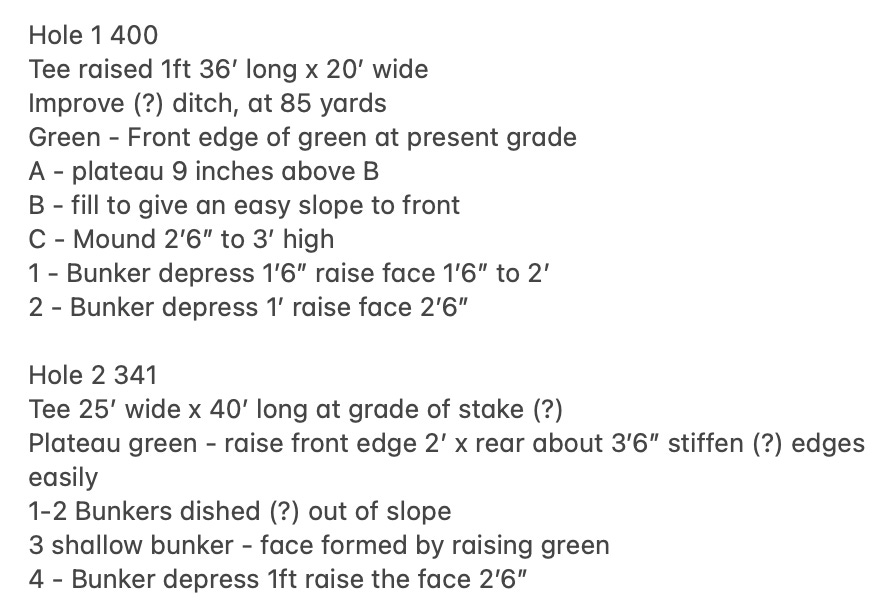
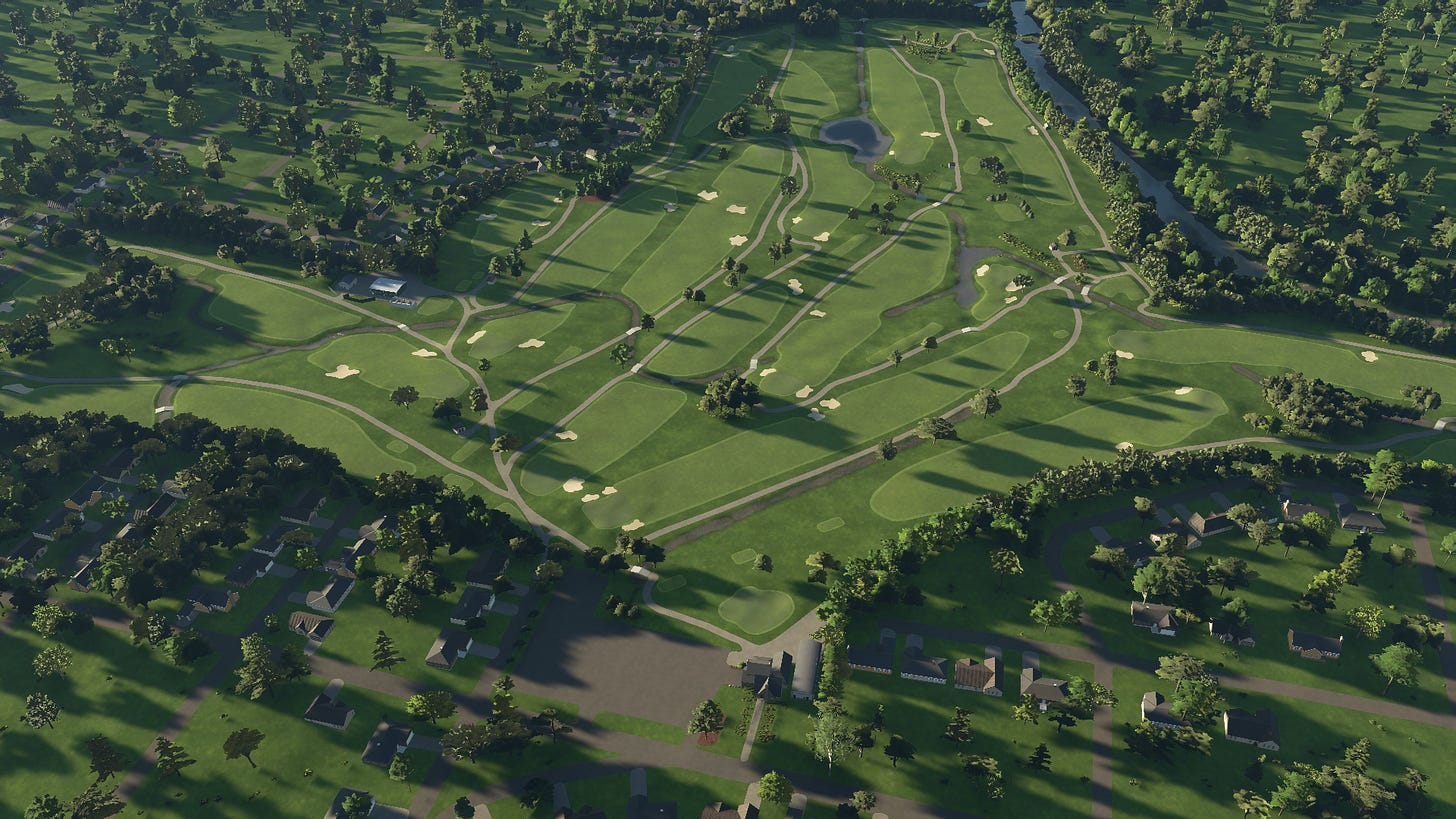
Played here on a trip to Sweetens Cove that got rained out. Really enjoyed it. It is in need of some love but a very fun track and I couldn't put my finger on why, now I can. Reading through the article I could envision my round and the course and can say that this resto would be fire.